I’ve heard speculation that when Stonehenge was complete in 2,200 BC, the outer sarsen circle might have behaved like a whispering gallery. Although as Rupert Till points out in a comment below, at best he thought it might be “some sort of partial whispering gallery effect.” Another suggestion is that reflections from the uprights might go beyond just creating reverberation to “perhaps [create] a series of discrete delays or echoes sounding somewhat like a galloping horse.” [1]

Certainly curved surfaces can focus sound and create distinctive flutter echoes, false localisation and whispering gallery effects (see the spherical Mapparium for example). But Stonehenge stones have uneven shapes and there are gaps between them, both of which will reduce the focussing. In a previous blog I wrote about how our measurements show there wasn’t strong focussed echoes in the middle of the stone circle. What happens when the talker (or whisperer!) and listener are at the edge of the circle?
I and colleagues Richard Hughes and Bruno Fazenda have been exploring what really happens when sound circulates just inside the outer sarsen circle. We’ll start by looking at some computer simulations, and then look at what the measurements in the acoustic scale model of Stonehenge show.
What is a whispering gallery?
Let’s start by looking at an authentic whispering gallery, to see what we’d expect if Stonehenge worked in that way. When someone talks along a concave wall, you can get sound that stays close to the edge. Figure 1 shows a classic way of illustrating this, considering sound to be a snooker ball bouncing around a circular table.

But modelling sound as a bouncing ball doesn’t work when you get wave effects like diffraction. So Rick simulated sound more accurately using a method called Finite Difference Time Domain (FDTD). Look out for the whispering gallery wave in the video below, it’s the one that takes the longest time to get to the bottom of the circle, hugging the wall all the way. (If you’re unclear which part of the wavefront to look at, see Figure 3).
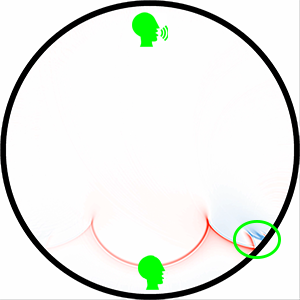
Figure 4 shows the response you’d pick up on a microphone at the bottom of the circle if the person made a short impulsive sound at the top (e.g. clapped their hands). First sound peak is the direct sound travelling straight across the circle from top to bottom. The very last peak to arrive is the whispering gallery wave, because it follows the longest path around the edge. Notice how much louder it is than the direct sound; this is a key feature of classic whispering galleries like St Paul’s Cathedral. The sound hugging the walls is surprisingly loud compared to the sound going direct across the circle, making the whispers appear to emerge from the walls.
You can also see a series of peaks arriving a bit earlier created by reflections from the side. These are easier to describe if we revert back to approximating sound as a snooker ball. The peak labelled “(1)” has reflected from the side of the circle once at 3 o’clock. Figure 5 illustrates this reflection path for high frequency sound.
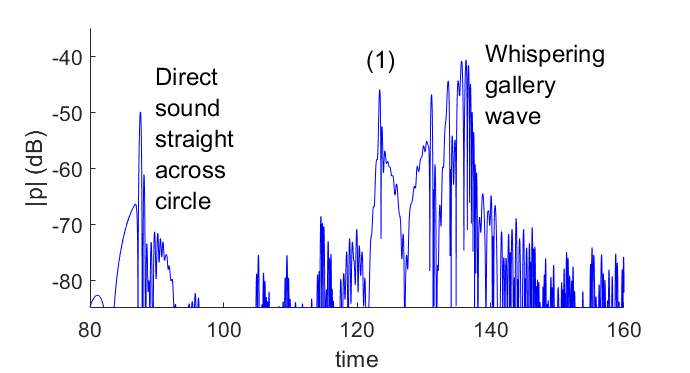
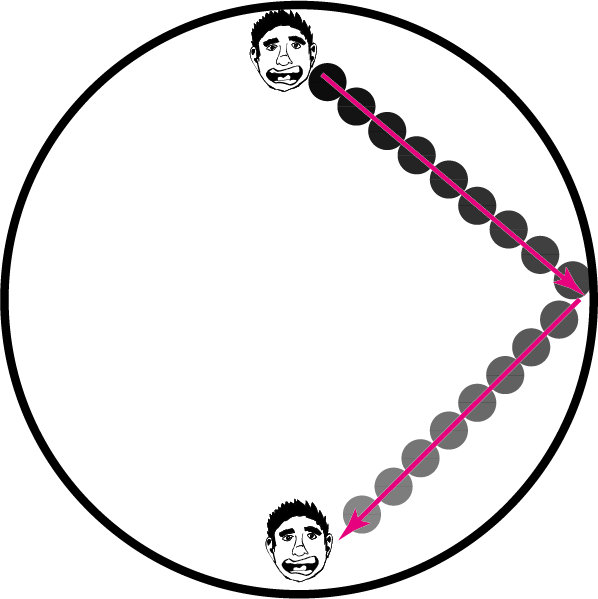
Whispering gallery with gaps?
There are gaps between the sarsen uprights in Stonehenge, what does that do to whispering gallery waves? Let’s start by looking at a simplified case of broken circle. I thought it was best shown side-by-side with the complete circle.
With the broken circle, as the sound skims past the gaps, diffraction creates little circular wavefronts going in all directions. This means the whispering gallery wave hugging the wall gradually diminishes. Figure 7 shows the impulse response. By the time the sound reaches the bottom, the whispering gallery wave is no longer visible.
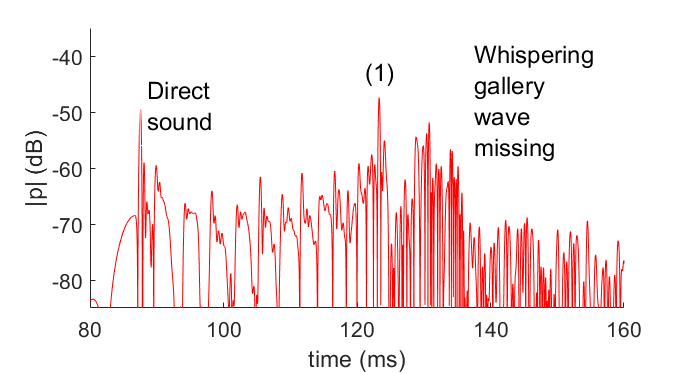
What about Stonehenge?
With Stonehenge we don’t just have gaps, we also have the irregular shapes of the stones. Also, there are other stones that get in the way, like the the bluestone circles and the inner trilithon. As the video in Figure 8 and the impulse response in Figure 9 show, there is no whispering gallery effect in Stonehenge.
We’ve also lost the focussed reflections that happened with circles – there is no stand-out reflection around the label (1). These are lost due to diffraction and scattering from the obstructing inner stones.
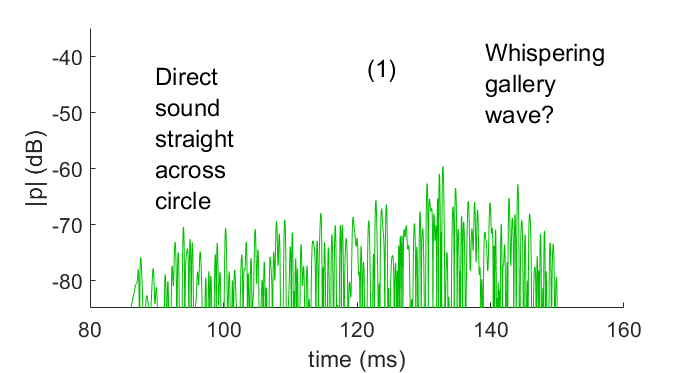
Measurements
The simulations have a number of limitations, not least they are in 2D using a plane cut through the Stonehenge model at about chest height. Real Stonehenge is 3D! So we used our 1:12 acoustic scale model of Stonehenge to see if we could measure any whispering gallery waves. Figure 10 shows the set-up for the shortest source to receiver distance. We measured six microphone positions roughly evenly spaced around the circle, the closest being the one you can see in Figure 10, and the furthest having the microphone on the opposite side of the circle.
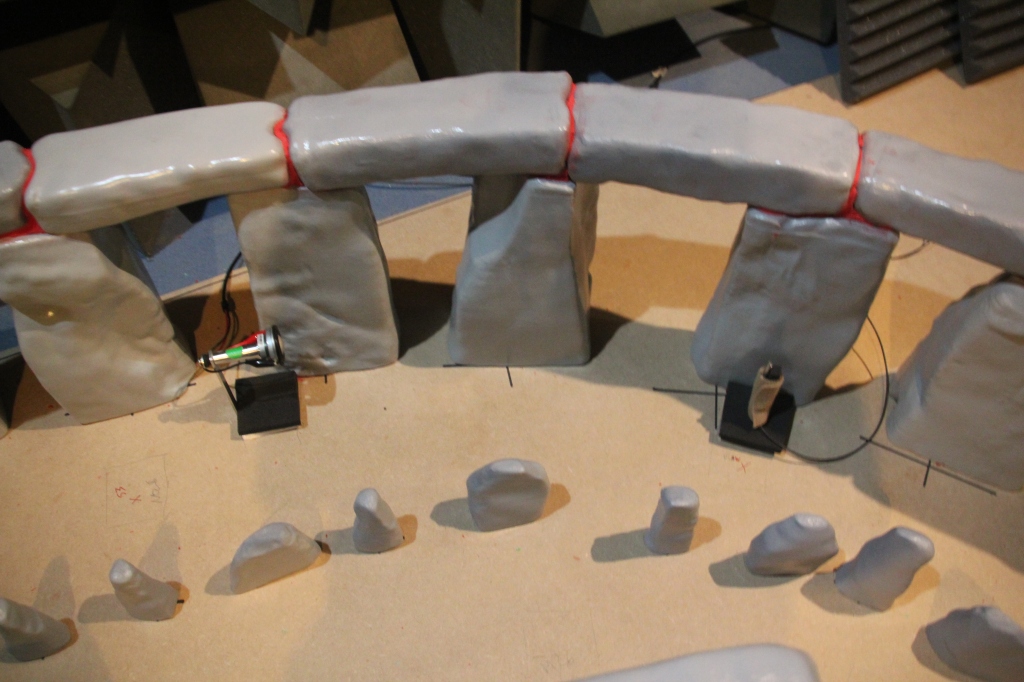
Figure 11 shows the impulse responses for the 6 microphone positions. Any whispering gallery wave should show up roughly around the time where the magenta line is marked in the middle of the plots. No evidence of whispering gallery waves are seen because there are no prominent reflections.
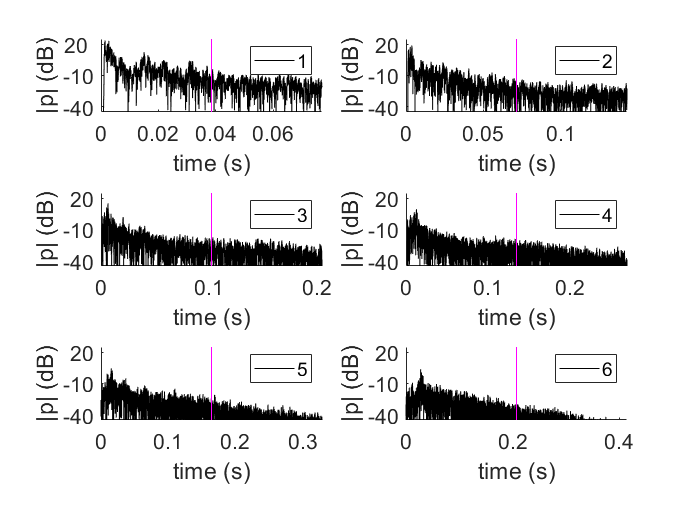
Summary
No evidence of whispering gallery waves in Stonehenge are seen in a FDTD computer simulation and also measurements in an 1:12 acoustic scale model. This happens because gaps between the outer sarsen uprights attenuate the whispering gallery waves, as does the somewhat irregular shape of the stones.
Furthermore, reflections from the outer sarsen circle don’t create “a series of discrete delays or echoes sounding somewhat like a galloping horse.” This is mostly due to the presence of many other stones that scatter the sound and attenuate any focussed reflections.
Credits
Ear icon: By ScotXW, based on work by Tatmouss – File:00-Main-hand.jpg, CC BY-SA 3.0
[1] https://soundsofstonehenge.wordpress.com/theoretical-analysis/ accessed 27/4/20
[2] Cox, T., 2014. Sonic wonderland: A scientific odyssey of sound. Random House.

